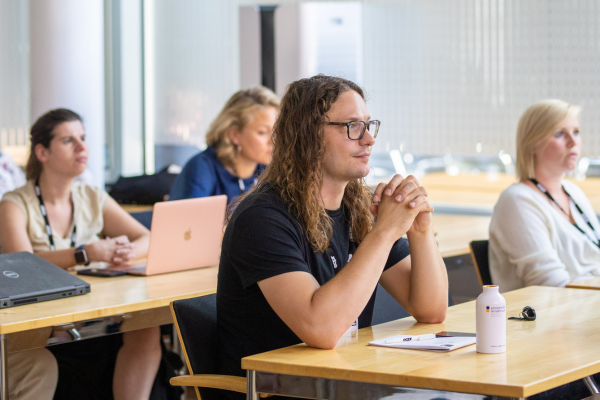
Amsterdam, Netherlands
Pre-University Honours Programme: Business Innovation & Entrepreneurship
When:
30 June - 09 July 2026
Credits:
0 EC
Read more
Social Sciences
When:
29 July - 02 August 2024
School:
Institution:
European Consortium for Political Research (ECPR)
City:
Country:
Language:
English
Credits:
4 EC
Fee:
492 GBP

Learn to master visual conjoint designs, a crucial tool for social scientists, covering design, deployment, and analysis, in this comprehensive course.
Conjoint designs have become one of the most important tools in the social scientist's toolbox today, allowing researchers to understand political preferences and attitude formation in a wide range of contexts and conditions. This course introduces you to visual conjoint designs, which build on the key concepts of traditional conjoint designs but incorporate visual rather than textual stimuli, such as social media profiles, candidate images, or real online environments. You will learn how to design a visual conjoint experiment, how to use combinatorial and randomised designs to control choice sets and attributes when relying on visual material, and how to create and deploy your own visual conjoint experiments using free and open source software.
Need to Know
We will rely on open source software at every stage of the research workflow, from the conjoint conceptualisation stage, through the design and randomisation stage, to the actual deployment and hosting of a conjoint experiment. While this course relies heavily on various js libraries, no prior knowledge of JavaScript or TypeScript is required to take the course. For data analysis, we will rely on the R programming language and the tidyverse framework, so basic knowledge of these two frameworks is helpful, but not a prerequisite.
In Depth - Key topics covered
The course is structured around the key components of the research workflow of a visual conjoint design:
Topic 1: Design of the visual conjoint framework
- Designing the attributes
- Creating visual stimuli and mimicking real online environments
Topic 2: Randomisation strategy and choice set design
- Constructing choice sets based on random designs
- Constructing choice sets based on combinatorial designs
- Constructing choice sets in an adaptive style
Topic 3: Running and deploying the conjoint experiment
- Running your visual conjoint experiment locally
- Deploying your visual conjoint experiment online
- Integration with other survey frameworks
Topic 4: Analysing the experimental data
- Effectively visualising the effects
- Relying on advanced techniques for analysing effect heterogeneity
Julia Schulte-Cloos is Assistant Professor of Political Science at the University of Marburg. Her areas of expertise revolve around around comparative politics, political behaviour, computational social science, and reproducibility.
Social Scientists
By the end of this course, you will have a comprehensive understanding of visual conjoint designs, their similarities and differences to traditional tabular conjoint designs and the main use cases of visual conjoint designs in the social sciences. You will understand the opportunities offered by choice-based visual conjoint experiments, recognise the requirements for conducting a visual conjoint research project, be able to design, conduct and deploy your own small-scale visual conjoint experiment, and master the skills necessary to analyse real data sets from visual conjoint experiments.
Fee
492 GBP, ECPR member - check whether your institution is a member here: https://ecpr.eu/Membership/CurrentMembers
Fee
985 GBP, ECPR non-member
When:
29 July - 02 August 2024
School:
Institution:
European Consortium for Political Research (ECPR)
Language:
English
Credits:
4 EC

Amsterdam, Netherlands
When:
30 June - 09 July 2026
Credits:
0 EC
Read more

Colchester, United Kingdom
When:
16 February - 20 February 2026
Credits:
4 EC
Read more

Colchester, United Kingdom
When:
16 February - 17 February 2026
Credits:
0 EC
Read more